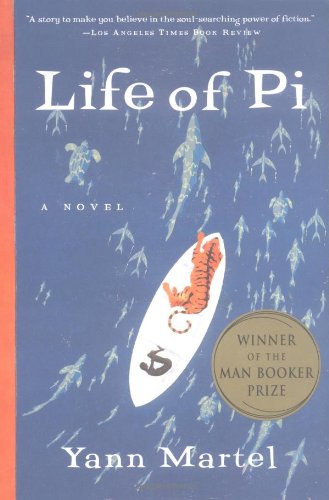All Nonfiction
- Bullying
- Books
- Academic
- Author Interviews
- Celebrity interviews
- College Articles
- College Essays
- Educator of the Year
- Heroes
- Interviews
- Memoir
- Personal Experience
- Sports
- Travel & Culture
All Opinions
- Bullying
- Current Events / Politics
- Discrimination
- Drugs / Alcohol / Smoking
- Entertainment / Celebrities
- Environment
- Love / Relationships
- Movies / Music / TV
- Pop Culture / Trends
- School / College
- Social Issues / Civics
- Spirituality / Religion
- Sports / Hobbies
All Hot Topics
- Bullying
- Community Service
- Environment
- Health
- Letters to the Editor
- Pride & Prejudice
- What Matters
- Back
Summer Guide
- Program Links
- Program Reviews
- Back
College Guide
- College Links
- College Reviews
- College Essays
- College Articles
- Back
Life of Pi by Yann Martel
Life of Pi
A visual journey of a young boy lost at sea, struggling to survive with the companionship of a Bengal tiger; a plot that made for a great novel. Life of Pi, written by Yann Martel, is an intense story of a young boy’s perseverance to keep himself alive, and the ways that he copes with life threatening matters while trying to hold onto hope. It has an ending that gives the reader the option the choice of deciding what they want to believe; the more believable story or the one involving fantasy. This fictional piece, is informative about survival at sea, how hope was a key to surviving, yet tends to stay on one topic for too long.
Although religion was a major aspect in determining the hopes and ways that Pi lived on the boat, the beginning of the book dwelled too long on the different religions that Pi practiced. These chapters introduced Hinduism, Christianity and Islam and the importance each played in his life, yet had an unnecessary amount of detail. This section of the novel was bland and mundane, and made it hard to get into the story. Further in the novel, the religion component was somewhat lost until the end, when the reader was intended to use their own interpretations. For some, the aspect of religion could be what makes this novel unique and interesting but for others it could seem as an unimportant and time consuming part.
Pi did not have any previous knowledge of survival at sea. After the shipwreck, day by day Pi learned new ways to use his resources and keep himself alive while on the lifeboat. Even with a fair amount of emergency supplies on the boat, the supplies were not enough to sustain him for his record breaking time lost at sea. When Pi’s food source had run out, he learned the skills to fish and catch turtles and did not only feed himself, but also the tiger that survived the shipwreck and was now his unwelcomed shipmate. Dehydration and starvation were the daily struggles Pi faced and later became temporarily blind. Martel’s writing was so effective that as the reader you felt as though you were on the boat with Pi and the tiger and experiencing their hardships. However, knowledge of practical skills was not the only key to Pi’s survival. While lost at sea, it was important for Pi to keep himself occupied and to keep himself hopeful.
It would seem that hope would be completely gone when you are all alone in the middle of the ocean and have lost all human interaction. However, Pi kept himself alive by constantly doing work on the boat and having Richard Parker as a distraction. “Without Richard Parker, I wouldn’t be alive today to tell you my story”(Martel 314). Along with the tiThe fear and tragedy tger, other animals were on the boat, which made the reality of what was happening seem less scary and personal. “Yes. The story with the animals is the better story”(Martel 317).When certain animals died or were killed on the boat, they were truly real people who were killing each other. In response to these gruesome deaths, Pi imagined these people to be animals who were just playing their part in the food chain and protecting themselves. Richard Parker, the bengal tiger, was revealed in the end to be Pi himself. This dark, animalistic side of himself was portrayed through this suffering tiger. the symbols that were chosen in this novel and the ways that Pi used them made the story fascinating and had your created empathy for each character.
Life of Pi was a novel unlike any other I have read before. As a younger reader who does not indulged in religion, I did not enjoy the longer beginning chapters when Pi was examining his spirituality, but appreciated the creative symbolism used to tie his adventures at sea with his religions. Being a teen who loves animals, I enjoyed the roles the animals played but did not enjoy reading the descriptive death scenes. The ways Pi pushed himself to survive and stay hopeful were inspiring and made you, as the reader, feel empathy towards him. Martel’s writing seemed to connect you to the characters and had a creative ending that enables the reader to decide how they choose to interpret the book.
Similar Articles
JOIN THE DISCUSSION
This article has 0 comments.

